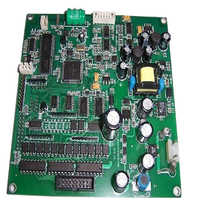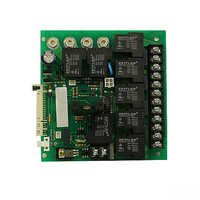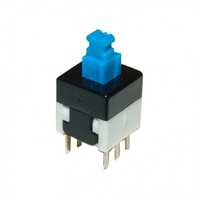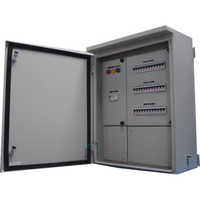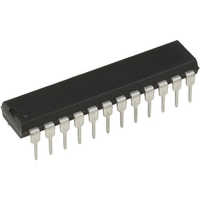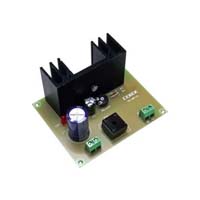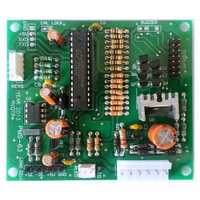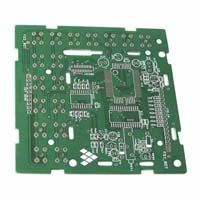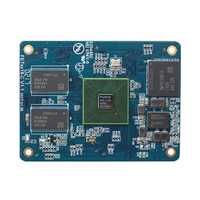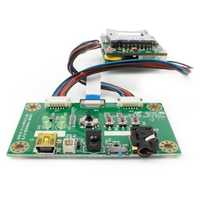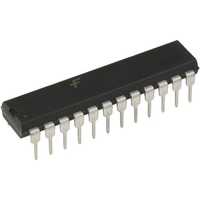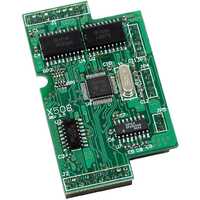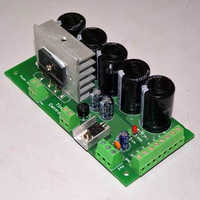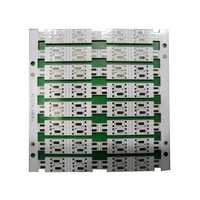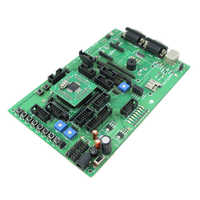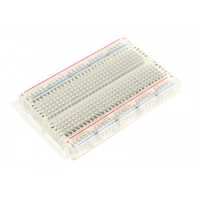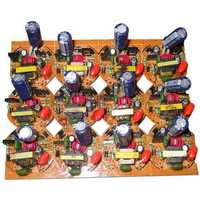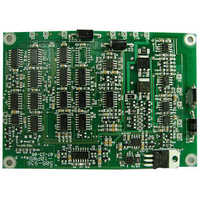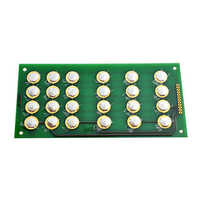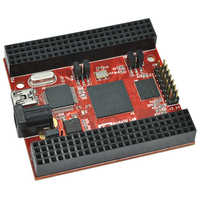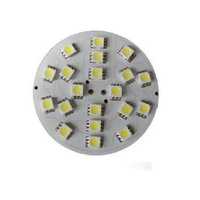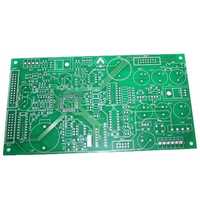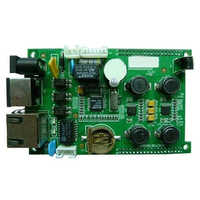Circuit Boards
(4377 products)
Top Circuit Boards Categories
Explore More Categories
Made in India
Green Isolation Transmitters
Price Trend: 15000.00 - 55000.00 INR (Approx.)/Piece
MOQ - 1 Piece/Pieces
Product Type - Isolation Transmitters
Color - Green
16 Years
Business Type: Manufacturer | Exporter
NIMBUS TECHNOLOGIES
Made in India
Industrial Electronic Circuit Boards
12 Years
Response Rate: 95.76%
Business Type: Manufacturer | Distributor
HAVER ELECTRIC PRIVATE LIMITED
Made in India
Molded Case Circuit Breaker
11 Years
Business Type: Manufacturer | Exporter
GUJARAT PLUG-IN DEVICES PVT. LTD.
Made in India
Pvc I-O Cable Base Material: Alumunium
MOQ - 10 Unit/Units
Flame Resistance Level - High
Base Material - Alumunium
Surface Finish - Lead Free
1 Years
Business Type: Manufacturer | Distributor
Cess Automation India LLP
Hall Sensor Circuit Board
Price Trend: 0.08 - 0.50 USD ($) (Approx.)/Piece
MOQ - 10 Piece/Pieces
6 Years
Business Type: Manufacturer | Distributor
Suzhou SDK Electronics Technology Co., Ltd.
Made in India
Aluminium Led Pcb Voltage Endurance: 150-220 Volt (V)
Price: 721 INR (Approx.)/Unit
MOQ - 100 Unit/Units
Voltage Endurance - 150-220 Volt (V)
Silkscreen - Colorless
Soldermask - Colorless
2 Years
Business Type: Manufacturer | Supplier
AARAV INDUSTRIES
Made in India
Videojet Printer Chip
12 Years
Business Type: Manufacturer | Distributor
AXIS DRUCKFARBEN LLP
Made in India
Green Weighing Scale Printed Circuit Board
Price: 200 INR (Approx.)/Piece
MOQ - 200 Piece/Pieces
Voltage Endurance - 6 Volt (V)
Test - Other
Board Type - Other
3 Years
Response Rate: 100%
Business Type: Manufacturer | Distributor
Galaxy Scale
Open Frame Cfl Drives
4 Years
Business Type: Manufacturer | Distributor
YONIX TECHNOLOGIES
Indian Inquiries Only
Made in India
Blue Arduino Mega 2560 Arduino Board For 3D Printer
Price: 493 INR (Approx.)/Piece
MOQ - 1 Piece/Pieces
Product Type - motherboard
Color - Blue
4 Years
Business Type: Manufacturer | Exporter
NOVO3D
Indian Inquiries Only
Ic Programming Board
8 Years
Business Type: Supplier | Trading Company
S M SEMICONDUCTORS
Obsolete Parts Board Base Material: Alumunium
Price: 3000 INR (Approx.)/Unit
MOQ - 1 Unit/Units
Silkscreen - Green
Color - Green
Product Type - Obsolete Parts Board
2 Years
Business Type: Manufacturer | Distributor
STAR AUTOMATIONS
Ly-Jhq-001 Air Purifier Electric Control Board Board Thickness: Different Available Millimeter (Mm)
MOQ - 10 Piece/Pieces
Product Type - Air Purifier Electric Control Board
Board Thickness - Different available Millimeter (mm)
Warranty - Yes
2 Years
Business Type: Manufacturer | Distributor
ZHONGSHAN CHENGYUAN DIGITAL ELECTRONIC TECHNOLOGY CO., LTD.
Made in India
Launchxl-F28379D - C2000 Delfino Mcus F28379D Launchpad Development Kit Board Thickness: 2 Millimeter (Mm)
Price: 5650 INR (Approx.)/Unit
MOQ - 1 Unit/Units
Board Type - Rigid
Product Type - Development Kit
Board Thickness - 2 Millimeter (mm)
Business Type: Manufacturer | Distributor
VP Electronics
Made in India
White Mild Steel 15 U Networking Rack
Price: 3500 INR (Approx.)/Piece
MOQ - 10 Piece/Pieces
Test - Flying Probe Test
Product Type - Mild Steel 15 U Networking Rack
Base Material - Other, Mild steel
Business Type: Manufacturer | Distributor
Mangla Enterprises
Indian Inquiries Only
Power Supply Modules
Product Type - Power Supply Modules
Color - Red
2 Years
Business Type: Manufacturer | Distributor
HONG KONG JAWEE TECHNOLOGY CO., LIMITED,
Made in India
Green Electronic Boards
Price: 3000 INR (Approx.)/Piece
MOQ - 10 Piece/Pieces
Color - Green
Product Type - Electronic Boards
Warranty - 1 Year
4 Years
Response Rate: 81.61%
Business Type: Exporter | Trading Company
DHWAJ INTERNATIONAL
Flood Light Pcb Board Thickness: Different Available Millimeter (Mm)
Price: 230 INR (Approx.)/Piece
MOQ - 100 Piece/Pieces
Product Type - Flood Light PCB
Board Thickness - Different available Millimeter (mm)
Color - White
2 Years
Business Type: Manufacturer | Exporter
LEVONIX LIGHTING SOLUTION
Made in India
Consistent Performance Embedded Controller
Product Type - Embedded Controllers
2 Years
Business Type: Manufacturer | Distributor
CAUTONI SWASTIK INSTRUMENTS INDIA PVT LTD
Automatic Light On-Off Controller
8 Years
Response Rate: 97.67%
Business Type: Manufacturer
POWER SWITCH SOLUTIONS
DC-DC Converters
6 Years
Business Type: Exporter | Trading Company
COMPONENT MASTERS
Made in India
Green Soc Micromodule With Xilinx Zynq-7020
Price Trend: 10000.00 - 100000.00 INR (Approx.)/Unit
MOQ - 1 Unit/Units
Product Type - SoC Micromodule With Xilinx Zynq-7020
Color - Green
7 Years
Business Type: Manufacturer | Distributor
AJITEK TECH SOLUTIONS PVT. LTD.
Indian Inquiries Only
Made in India
Rectangular Single Surface Plastic Blue Uv Led Circuit Plate Base Material: Fr1
Price: 7900 INR (Approx.)/Unit
MOQ - 1 Unit/Units
Color - Blue
Silkscreen - Blue
Soldermask - Blue
1 Years
Business Type: Manufacturer | Distributor
SINGHSA MEDICARE CORPORATION
Made in India
Siemens Circuit Breakers
11 Years
Business Type: Manufacturer | Distributor
TANISHQ ENGINEERING
Made in India
Durable Led Bulb With Mcpcb Base Material: Alumunium
Price: 44 INR (Approx.)/Carton
MOQ - 500 Carton/Cartons
Soldermask - Colorless
Flame Resistance Level - 22
Insulation Resistance - 220
2 Years
Business Type: Manufacturer | Supplier
LOOMLED TECHNOLOGY PRIVATE LIMITED
Indian Inquiries Only
Made in India
Any Color Ultrasonic Main Card 20Khz
MOQ - 10 Piece/Pieces
Board Type - Rigid
Product Type - Ultrasonic Main Card 20Khz
Color - Any Color
3 Years
Business Type: Manufacturer | Exporter
HANUMAN ELECTRONIC SYSTEM
Made in India
Aluminium Pcb - Base Material: Alumunium
Price: 2500 INR (Approx.)/Piece
MOQ - 10 Piece/Pieces
Soldermask - Black
Product Type - Aluminium Pcb
Base Material - Alumunium
2 Years
Business Type: Manufacturer | Supplier
SKYLINE PCB
Electronic Weighing Scale PCB
3 Years
Business Type: Manufacturer | Service Provider
PUNIT INSTRUMENT
Circuit Boards Manufacturers | Suppliers in India
| Company Name | Location | Member Since |
|---|---|---|
| Nimbus Technologies | Dombivli, India | 16 Years |
| Haver Electric Private Limited | Faridabad, India | 12 Years |
| Axis Druckfarben Llp | Surat, India | 12 Years |
| Gujarat Plug-In Devices Pvt. Ltd. | Vadodara, India | 11 Years |
| Tanishq Engineering | Ahmedabad, India | 11 Years |
| S M Semiconductors | Mumbai, India | 8 Years |
| Power Switch Solutions | Ghaziabad, India | 8 Years |
| Ajitek Tech Solutions Pvt. Ltd. | Hyderabad, India | 7 Years |
| Suzhou Sdk Electronics Technology Co., Ltd. | Suzhou, China | 6 Years |
| Component Masters | Mumbai, India | 6 Years |
What's a PCB?
The printed circuit board, also known by the name printed wiring cards or printed wiring boards is a known and important element in electricals. Prior to the invention of the printed circuit board, the process of creating a circuit is very tedious and involved an extensive manual process of wiring from one point to another. This presents itself with a major issue of failures at the wire junctions. Also, whenever the insulation starts to wear out, there would be short circuits.
Wire wrapping, in which a thin gauge wire is physically wrapped around a post at each connecting point to provide a gas-tight connection that is highly robust and easily adjustable, represents a significant advancement.
As silicon and integrated circuits replaced vacuum tubes and relays in electronics, the size and price of electronic components started to come down. Then the demand for electronics by everyday consumers started to increase and electrical companies started to come up with better solutions to produce electronic goods that are affordable and portable. Hence, the PCB was created and it proved to be one of the greatest solutions in electrical.
The PCB is a circuit board with lines and pads that join different places. The various connectors and components are electrically connected. Between physical devices, communications and power can be routed via a PCB.
The metal used to attach the electronic components to the PCB's surface electrically is called solder. Since solder is made of metal, it is also a powerful mechanical adhesive.
Circuit Board Components
Typically, fiberglass serves as the substrate or base material. Historically, "FR4" has been used to designate this fiberglass the most frequently. The rigidity and thickness of the PCB are a result of this solid core. Additionally, flexible PCBs constructed from flexible high-temperature plastic exist and this plastic is usually Kapton or other material similar to it. PCBs are of varying thicknesses the common one being PCBs for Spark Fun with a thickness of 1.6mm. Arduino Pro Micro boards and Lily Pad boards use boards that are 0.8mm thick.
Printed Circuit Boards can also be made of cheaper materials like phenolics and epoxies. These types of boards produce an unpleasant when they are soldered to any wire. These low-quality PCBs are found in low-quality electrical products.
Next is a thin layer of copper foil laminated onto the board through adhesive and heat. In common PCBs, that is double-sided printed circuit boards, the copper film is laminated to both sides of the FR4. In lower-quality electronic devices, there may be only a single layer of copper foil even in the common PCBs. The number of copper layers may differ depending on the type of PCB. There are be less than 1 layer and there can be as many as 16 layers. Weight, expressed in ounces per square foot, is used to specify the copper thickness, which can vary.
The majority of printed circuit boards (PCBs) include 1 ounce of copper per square foot, however certain PCBs that handle extremely high power may utilize 2 or 3 ounces of copper. Copper is approximately 35 micrometers thick, or 1.4 thousandths of an inch, per square ounce.
The solder mask layer is the one that sits on top of the copper foil. The PCB's green color comes from this layer or in the case of SparkFun, red. This layer aids the user in soldering in the appropriate locations and eliminates solder jumpers.
The majority of the PCB in the example below has the green solder mask applied, masking the small traces while leaving the silver rings and SMD pads visible for soldering. Soldermask is usually green in color but it can be made in any color like red for SparkFun PCBs, for LilyPad PCBs are purple and for IOIO boards it is white.
Circuit Board Design
- Signal types
- Current maximums
- Impedance characteristics
- Shielding considerations
- Capacitance limitations
- Voltages
- Location and type of circuit connectors and components
- Elaborate listing of net wire and schematic
A good PCB provider will team up with principle engineers to come up with a schematic using a software application like Allegro, Mentor PADSAR, or Altium. These platforms show the circuit planner how the board will function and the position in which the components need to be placed.
After the schematics are created, the design will be loaded by a mechanical engineer who will decide how the design will be incorporated into the electrical device.
Most of the time, the PCB provider and the customer will collaborate and come up with layout and design guidelines to place each component on the board. For instance, certain components cannot to connected close to another because electrical noise may be created in the circuit.
Usually, the PCB provider has access to data sheet information on each component where he will then place the data sheet in the mechanical layout and hand it over to the customer for finalization and approval.
FAQs: Circuit Boards
Related Categories
Brass Electrical & Electronic Components
Bulbs & Tubelight
Cable Terminal, Lugs & Socket
Cable Trays
Cables/Cable Accessories & Conductors
Calculator
Capacitors
Chargers
Circuit Boards
Circuit Breaker
Commercial Field
Control Panel Boards
Dc Power Supplies
Decorative Lights
Diesel Generator Sets
Doorbell
ESD Products & Equipment
Earthing Electrodes
Electric Motors & Engines
Electric Power Tools
Electrical / Lighting Products & Components
Electrical Enclosures
Electrical Goods, Equipment & Supplies
Electrical Outlets
Electrical Product Agent
Electrical Safety Products
Electrical Testing & Measuring Equipment
Electrical Transmission Line Goods
Electro Magnets
Electro Stampings
Electronic Data Systems
Electronic Enclosures
Electronic Instrument
Electronic Liquid Level Controllers & Indicators
Electronic Products & Components
Electronic Safe
Electronic Signs & Sign Board
Electronic Testing Equipment
Electronics Agents
Electronics Stocks
Emergency & Safety Lights
Energy Saving Devices
Fibreglass Cable
Financial Field
Flashlights
Flood Light
Frames & Display
Generator Parts & Accessories
Generators
Heat Resistance Wire
Home Automation Systems
Industrial Automation
Insulation Material
Insulation Paper
Inverters & Ups Equipment
Jacks
LED Displays
LED Products
Lamps & Lampshades
Laser
Light Fittings & Fixtures
Lightning Protection System
Mobile Phones, Accessories & Parts
Outdoor Lighting
Plastic Enclosures
Plastic Welding Equipment
Power Cable Accessories
Power Supplies
Power Transmission Equipment
Pressure Switches
Public Address Systems
Radio & TV
Radio & TV Equipment
Rectifiers
Relays
Residential Lighting
Semiconductors
Sensors
Speakers & Speaker Parts
Stainless Steel Wires & Cables
Switchboard
Switches
Switchgear & Allied Products
TV Picture Tubes
Transformer & Transformer Components
Turbine
Voltage Stabilizers
Water Heater
Welding Equipment
Wires/Cables & Accessories
Wiring Harness
